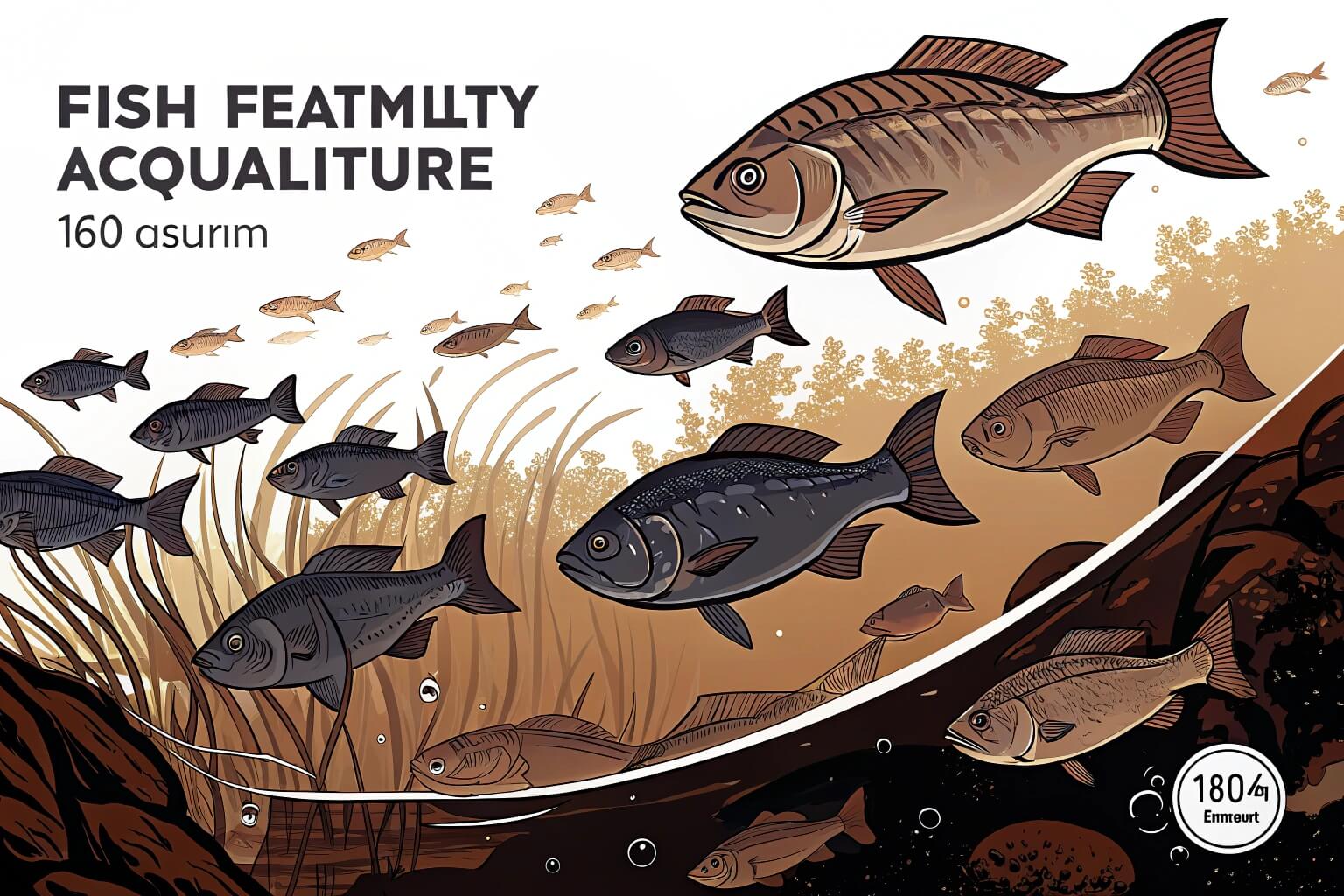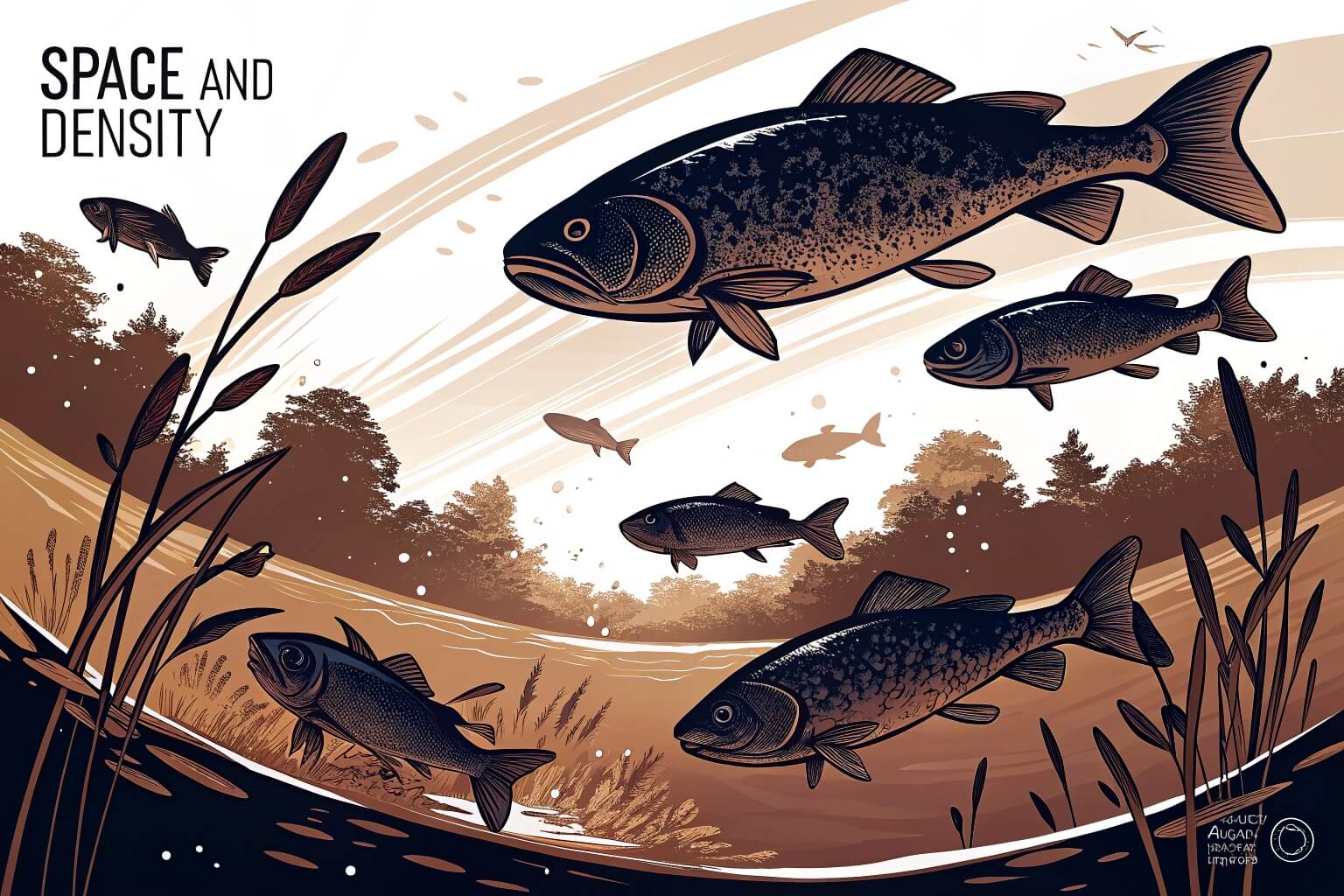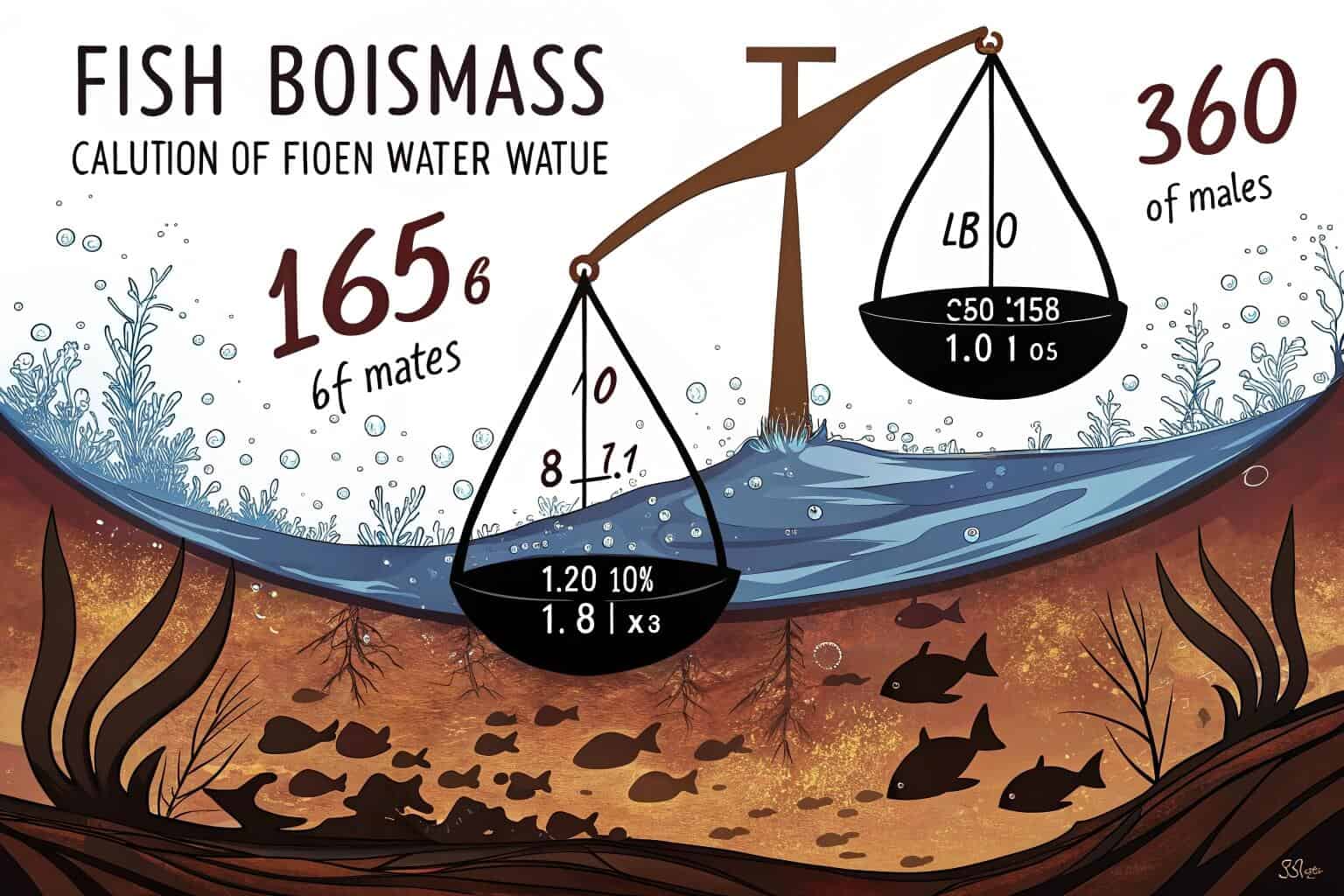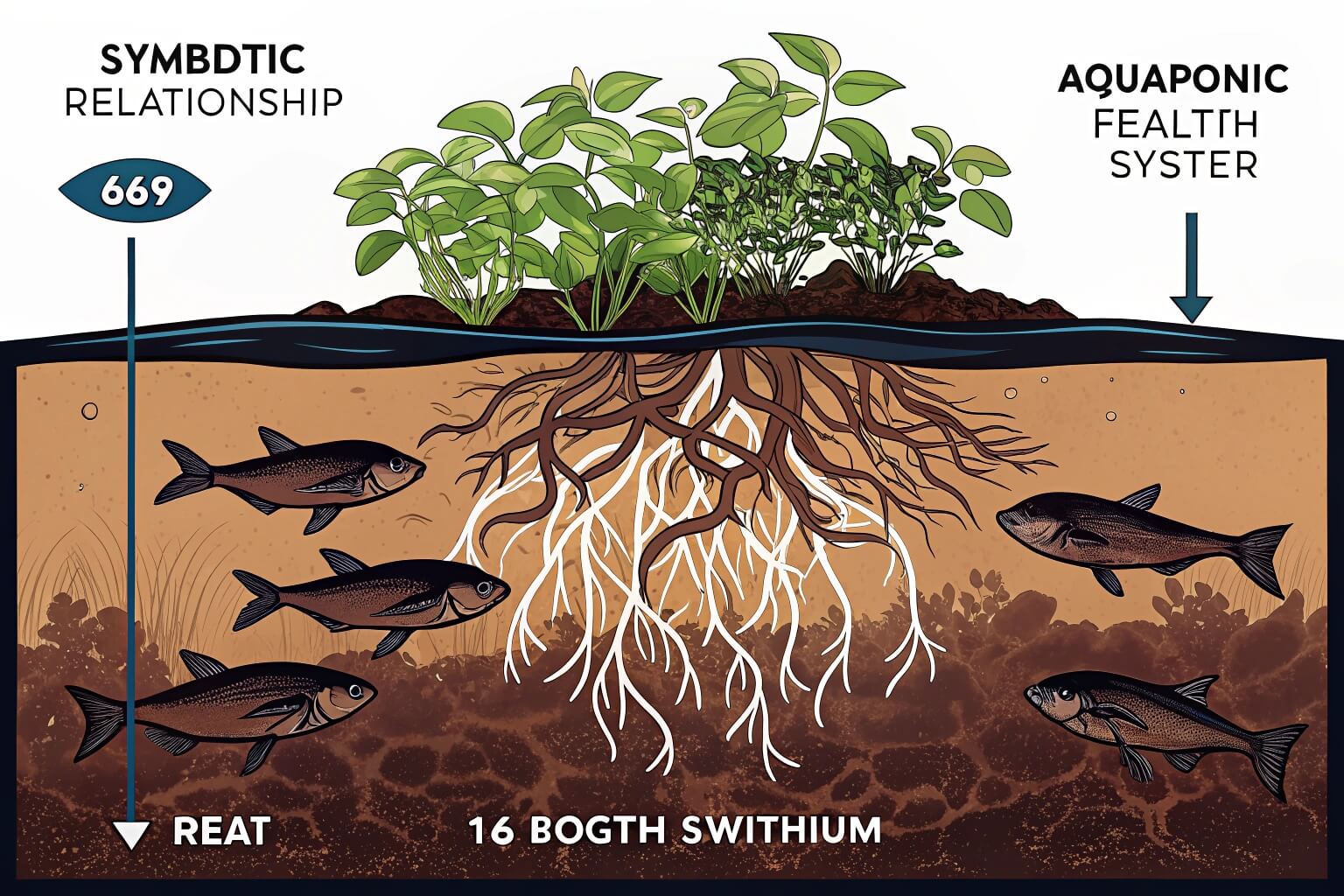How many fish per volume of water in aquaculture
Struggling with fish stocking? Overcrowding kills profits. Understocking wastes space. Find the sweet spot for healthy, thriving fish.
The ideal number of fish depends on species, tank size, and filtration. Generally, 1 pound of fish per 5-10 gallons of water is a starting point, but it varies greatly and requires careful management for success.

Getting the fish-to-water ratio right is crucial for success. It's not just a number; it's about creating a balanced ecosystem. Let's explore this further.
What is the ratio of fish to water?
Confused about fish stocking density? Wrong ratios mean sick fish and lost money. Learn the key to a productive aquaculture system.
The fish-to-water ratio isn't fixed. It's a dynamic balance influenced by fish type, size, and your system's capacity. For instance, smaller fish or those in highly aerated systems can often be stocked more densely.

As an aquaculture practitioner, I've learned that understanding the fish-to-water ratio is fundamental. It's more than just numbers; it's about the well-being of your fish and the efficiency of your farm. My work with Bancy Solutions1 has shown me how vital the right equipment is in managing these delicate balances.
Factors Influencing Optimal Ratios
Several critical factors determine the ideal stocking density. First, fish species2 plays a huge role. Some fish, like tilapia, are quite hardy and can tolerate higher densities, especially with good aeration and filtration. I've seen tilapia thrive in our Bancy PVC Fish Ponds when conditions are well-managed. Others, like trout, are more sensitive and require more space and pristine water conditions. Second, fish size3 is important. Fry and fingerlings obviously take up less space and produce less waste than adult fish. As they grow, the density effectively increases, so you need a plan for thinning them out or moving them to larger tanks. Our Bancy collapsible fish tanks offer great flexibility here, allowing for easy setup of additional capacity as needed. This adaptability is something I always emphasize to my clients.
The Role of Your Aquaculture System
Your system's design and management are paramount. A recirculating aquaculture system (RAS)4 with robust biofiltration, like those that can be built using our durable Galvanized Plate Aquaculture Tanks, can support higher densities than a simple flow-through system or a static pond. The double-welded seams on many Bancy products also give me peace of mind regarding durability for such intensive systems. Aeration and oxygen levels are critical; more oxygen means more fish can be supported. Water quality parameters like ammonia, nitrite, and nitrate levels must be constantly monitored. If these spike, it's a clear sign your density is too high for your system's capacity.
General Guidelines vs. Specific Needs
While general guidelines exist, they are just starting points. I always advise clients to start conservatively and observe their fish and water quality closely. It's a lesson I've learned over many years in this field.
| Factor | Impact on Stocking Density | Bancy Solution Example |
|---|---|---|
| Fish Species | Varies (Hardy vs. Sensitive) | Versatile tanks like our PVC Fish Ponds suit many species. |
| Fish Size | Smaller = Potentially Higher | Modular systems like our Collapsible Fish Farming Tanks for staged growth. |
| System Type | RAS = Higher, Static = Lower | Our Galvanized Steel Tanks are excellent for robust RAS. |
| Aeration5 | More O2 = Higher Density | Bancy tanks are designed for easy integration of aeration systems. |
| Water Quality6 | Key Limiting Factor | Easy-to-clean surfaces in Bancy tanks help maintain hygiene. |
Ultimately, the best ratio is one that allows your fish to thrive, grow quickly, and remain healthy, maximizing your farm's output. This often involves some trial and error, careful observation, and adapting to your specific conditions. My experience with Bancy's range of tanks, from flexible PVC options to sturdy galvanized steel, has shown me that having the right equipment makes managing these ratios much more achievable.
How much fish per volume?
Wondering how many fish fit in your tank? Guessing can lead to disaster. Get clear on calculating fish per volume for success.
"Fish per volume" is often measured in pounds of fish per gallon or kilograms per cubic meter. For example, a common target for tilapia in well-managed systems might be 0.5 lbs/gallon, but this varies widely based on system and management.

Calculating "how much fish per volume" is a core task for any aquaculturist. It's not just about cramming as many fish as possible; it's about finding a sustainable density that promotes health and growth. I've seen firsthand how getting this wrong can lead to problems, from disease outbreaks to stunted growth. This is why at Bancy, we focus on providing reliable tanks that support healthy fish populations7.
Common Units and Benchmarks
In the industry, we often talk about stocking density in terms of weight per unit volume. Common units include pounds per gallon (lbs/gal) in the US, or kilograms per cubic meter (kg/m³) in metric systems. For instance, some intensive tilapia systems might aim for 0.5 to 1 lb/gallon (around 60-120 kg/m³). Achieving this, however, is at the higher end and requires excellent management and infrastructure, like our robust Bancy Galvanized Sheet Fish Tanks8 which are designed for such demanding applications. For less intensive systems, or for more sensitive species, the density would be much lower. I always stress that these are benchmarks, not rigid rules.
Why "Volume" Isn't the Only Factor
While volume is a primary measure, it's crucial to remember that the quality9 of that volume matters immensely. A large tank with poor water circulation and low oxygen is far worse than a smaller, well-managed tank. This is where the design of the tank itself comes into play. Our Bancy tanks10, for example, are designed to facilitate good water flow and easy integration with filtration and aeration systems. The material also matters; our food-grade PVC liners, often featuring Bancy's signature double-welded seam technology for extra security, ensure no harmful substances leach into the water, which is a cornerstone of responsible aquaculture.
Practical Calculation and Adjustment
To calculate this, you need to know the volume of your tank and have an estimate of the average weight of your fish. As fish grow, their total biomass increases, so you must continually adjust. This might mean harvesting some fish or moving them to larger tanks. This is where the flexibility of Bancy's product line, like our easily deployable Collapsible Plastic Fish Tanks11, becomes a real asset for managing different growth stages. I've used these myself to scale operations up or down based on market demand and fish growth cycles.
| Parameter | Unit Example | Typical Range (Tilapia) | Consideration for Bancy Products |
|---|---|---|---|
| Stocking Density | lbs/gallon | 0.25 - 1.0 | Bancy tanks support various densities with robust construction. |
| Stocking Density12 | kg/m³ | 30 - 120 | Our durable construction handles higher loads effectively. |
| Water Exchange | % per day | 10% - RAS (low) | Bancy systems are designed for efficient water use. |
| Feeding Rate | % body wt/day | 1-5% | Our tanks offer easy access for feeding and observation. |
My advice is always to start with a lower density than you think you can manage, especially if you're new to a particular species or system. Monitor your water quality parameters (ammonia, nitrite, nitrate, oxygen) very closely. The fish will tell you if they're stressed. And remember, quality equipment like Bancy's tanks provides a reliable foundation for managing these densities effectively.
What is the ratio of fish to plant in aquaponics?
Balancing fish and plants in aquaponics seems tricky? An imbalanced system means neither thrives. Discover the ideal fish-to-plant harmony.
The fish-to-plant ratio in aquaponics depends on feed rate, plant type, and system design. A common guideline is 60-100 grams of daily fish feed per square meter of deep water culture growing area for leafy greens.

Aquaponics is a beautiful dance between fish and plants, and I'm always fascinated by how they support each other. As someone deeply involved in aquaculture through Bancy Solutions, I see aquaponics as a brilliant extension of sustainable water use. The ratio of fish to plants is at the heart of this symbiotic relationship13. It's not just about numbers; it's about nutrient flow. The fish provide the nutrients for the plants, and the plants clean the water for the fish. Getting this balance right is key to a successful and sustainable aquaponics system, and it's a topic I discuss often with fellow enthusiasts.
The Nutrient Connection: Feed is Key
The most common way to determine the fish-to-plant ratio is based on the amount of fish feed added to the system daily. This is because the feed is the primary source of nutrients (like nitrogen) that the plants will eventually use. A widely cited guideline, especially for leafy greens in raft or deep water culture (DWC) systems, is to provide nutrients from 60 to 100 grams of fish feed per day for every square meter of plant growing area.14 For fruiting plants like tomatoes or cucumbers, which are heavier feeders, this might need to be higher. I've seen successful systems adjust this based on careful observation of plant growth and water quality.
Factors Influencing the Ratio
Several factors can shift this ideal ratio:
- Type of Plants15: Leafy greens generally need fewer nutrients than fruiting vegetables.
- Type of Fish: Different fish species have different feed conversion ratios and waste production rates. Tilapia, a common choice, are quite efficient.
- System Design: The type of grow bed (media bed, NFT, DWC) influences nutrient availability and processing. Media beds, for example, have more surface area for beneficial bacteria that convert fish waste into plant-available nutrients.
- Filtration16: Efficient solids removal and biofiltration are crucial. If solids aren't removed, they can clog the system. If biofiltration isn't adequate, ammonia can build up, harming the fish. Our Bancy fish tanks, like the Collapsible PVC Fish Ponds, are easy to integrate with various filtration setups, ensuring a clean start for the water heading to the plants. The reliability of the fish tank is paramount here, and that's where Bancy's quality shines.
Practical Considerations for Your Bancy System
When setting up an aquaponics system using, for example, one of our Bancy Galvanized Pipe Fish Tanks, you'd calculate the potential growing area of your plant beds and then work backward to determine the amount of fish biomass needed to supply the right amount of feed. Remember, a stable fish environment leads to a stable nutrient supply17 for your plants.
| Component | Key Metric | Target Range | Bancy Product Relevance |
|---|---|---|---|
| Fish Feed | g/day/m² of grow bed | 60-100g (leafy greens) | Bancy tanks provide a stable, safe environment for fish. |
| Fish Biomass | kg (total weight of fish) | Calculated based on feed rate & % body weight | Various Bancy tank sizes to match plant system scale. |
| Plant Type | Leafy vs. Fruiting | Fruiting needs more nutrients | Our tanks can support fish for diverse plant needs. |
| System Water Volume | Liters/Gallons | Affects stability | Bancy offers tanks from small to very large capacities. |
From my experience, it's better to start with a slightly lower fish-to-plant ratio and gradually increase the fish stock as your system matures and your biofilter becomes well-established. Regular testing of water parameters like nitrate levels will tell you if your plants are getting enough nutrients or if there's an excess. The goal is a balanced ecosystem where both fish and plants flourish. Using reliable components like Bancy's durable and food-safe tanks is a great first step towards that goal.
How many fish are in a 1000 gallon pond?
Got a 1000-gallon pond and unsure about fish numbers? Overstocking can ruin your beautiful water feature. Learn the safe limits.
For a 1000-gallon pond, the number of fish varies greatly with species and filtration. For goldfish, a general rule is 1-2 small fish per 10-20 gallons, fewer if large. Koi need much more space.

A 1000-gallon pond can be a wonderful feature, whether for ornamental fish like koi or goldfish, or even for small-scale aquaculture18. As a pond owner or someone considering one, I know the question "how many fish?" is top of mind. The answer, as always in aquaculture, is "it depends!" But let's break down the key considerations. My experience at Bancy, dealing with various water containment solutions, has given me a broad perspective on this.
Species Matters Most
The type of fish you plan to keep is the biggest factor.
- Goldfish: Smaller varieties of goldfish are relatively hardy. A common, very general rule of thumb is often cited as "one inch of fish per gallon," but this is overly simplistic and can lead to overstocking quickly as fish grow. A more conservative approach for common goldfish might be 1 fish per 20-30 gallons, assuming they will grow to a decent size. Fancy goldfish are more delicate and need more space and better water quality.
- Koi19: Koi get very large (2-3 feet is not uncommon) and produce a lot of waste. For koi, a 1000-gallon pond is considered small, suitable for perhaps 2-4 small to medium-sized koi, and only if you have excellent filtration. Many experienced koi keepers recommend 250-500 gallons per adult koi to ensure their health and water quality.
- Aquaculture Species (e.g., Tilapia, Catfish): If you're using a 1000-gallon tank for growing fish for food, like one of our Bancy Large Galvanized Tube Aquaculture Tanks, you can stock more densely. However, this absolutely requires robust filtration, aeration, and regular water management, possibly a full RAS setup. For tilapia in such a system, you might aim for 50-100 fish if growing them to a plate size, but this demands active, knowledgeable management. The durability of Bancy tanks, with features like strong frames and quality liners, is essential for such intensive use.
Filtration and Maintenance are Key
A 1000-gallon pond with no filtration can support very few fish without becoming a murky, unhealthy mess. A pond with a high-quality biological filter, a UV sterilizer20, and a routine of regular partial water changes can support a significantly higher bioload. The surface area of the pond also matters for oxygen exchange; a wider, shallower pond will have better gas exchange than a deep, narrow one. Waterfalls or fountains can help aerate the water.
The "One Inch Per Gallon" Myth Revisited
I want to re-emphasize that the "one inch per gallon21" rule is generally unhelpful for long-term pond health. It doesn't account for the adult size of the fish, their body mass (a 6-inch slender fish is very different from a 6-inch bulky, deep-bodied fish), or their waste production levels. Following it blindly is a common mistake that often leads to an overcrowded, unhealthy pond down the line.
| Fish Type | General Guideline (1000 gal pond) | Filtration Needs | Bancy Product Consideration (if applicable) |
|---|---|---|---|
| Common Goldfish | 10-20 (starting small, will grow) | Moderate | Bancy's durable liners22 are great for pond construction. |
| Fancy Goldfish | 5-10 (more delicate) | Good | Smooth tank/liner surfaces are gentle on delicate fins. |
| Koi | 2-4 (only with excellent filtration) | Excellent | Our large, robust tanks if used for koi grow-out or holding. |
| Tilapia (food) | 50-100+ (with intensive RAS) | Very High | Bancy's range of aquaculture tanks (PVC, Galvanized). |
My personal advice for a 1000-gallon ornamental pond is to err on the side of understocking. You'll have healthier fish, clearer water, and fewer problems. If you're using a 1000-gallon Bancy tank for aquaculture, then you can push the densities, but you must be prepared for the increased management that requires. It's about creating a sustainable environment where your fish can truly thrive. As someone who provides these systems through Bancy, I believe in responsible stocking and providing the right tools for the job.
Conclusion
Finding the right fish density maximizes health and yield. Careful planning and quality equipment, like Bancy's reliable aquaculture solutions, are your best allies for success.
-
Discover how Bancy Solutions can enhance your aquaculture practices with their specialized equipment and support. ↩
-
Exploring this resource will help you understand which fish species thrive in various conditions, enhancing your aquaculture success. ↩
-
This link will provide insights into how fish size impacts space requirements and waste production, crucial for effective management. ↩
-
Explore the advantages of RAS for sustainable fish farming and how it can enhance productivity and water quality. ↩
-
Aeration significantly impacts fish health and growth rates. Learn why it's essential for your aquaculture system. ↩
-
Water quality is a key factor in fish farming success. Discover insights on maintaining optimal conditions for your fish. ↩
-
Discover effective strategies for maintaining healthy fish populations, which is essential for successful aquaculture practices. ↩
-
Explore the advantages of these tanks for intensive aquaculture systems and their role in successful fish farming. ↩
-
Understanding the significance of water quality can enhance your aquaculture practices and ensure healthier aquatic life. ↩
-
Exploring the advantages of Bancy tanks can help you make informed decisions for optimal tank design and management. ↩
-
Explore how Collapsible Plastic Fish Tanks can enhance your aquaculture operations with flexibility and efficiency. ↩
-
Learn about the importance of stocking density in fish farming to ensure healthy growth and sustainability. ↩
-
This link will provide insights into the crucial interactions between fish and plants in aquaponics, enriching your knowledge. ↩
-
Understanding the optimal fish feed amount is crucial for maximizing plant growth in aquaponics systems. Explore this link for detailed guidelines. ↩
-
Understanding the nutrient needs of various plants can help optimize your aquaponics system for better yields. ↩
-
Exploring effective filtration methods can enhance the health of your fish and plants, ensuring a thriving aquaponics environment. ↩
-
A stable nutrient supply is vital for plant health; explore methods to achieve this in your aquaponics setup. ↩
-
Learning about small-scale aquaculture can help you maximize your pond's potential for sustainable fish farming. ↩
-
Discover expert advice on Koi care, including pond size, filtration, and health management to keep your Koi thriving. ↩
-
Learn how UV sterilizers can improve water clarity and fish health in your pond.--- ↩
-
Understanding this rule can help you avoid common mistakes in pond management and ensure a healthier aquatic environment. ↩
-
Discover how Bancy's durable liners can enhance your pond's longevity and health. ↩